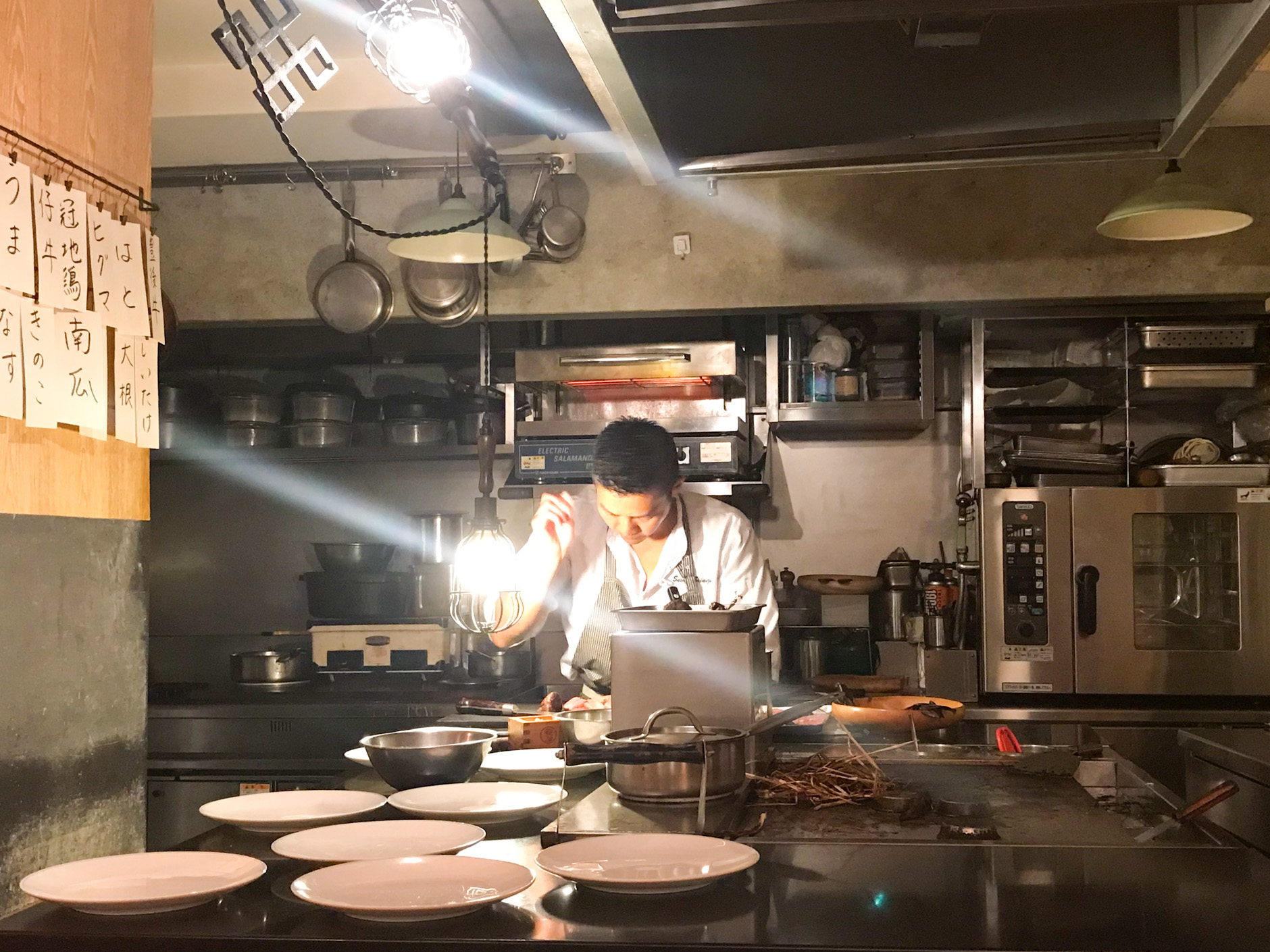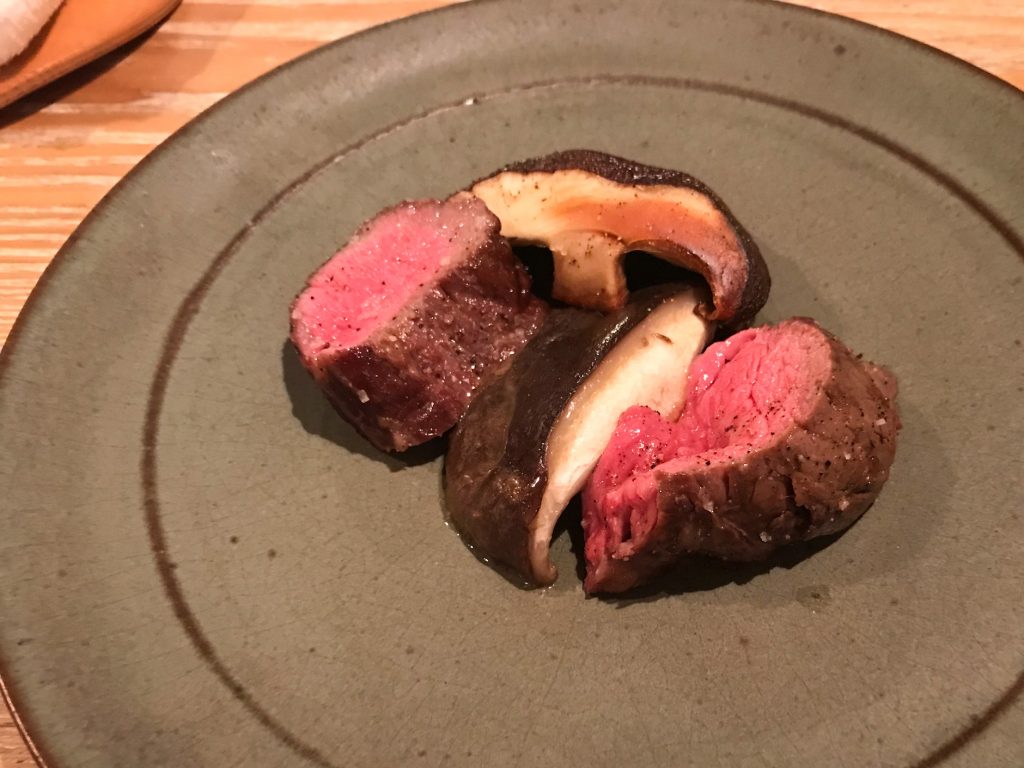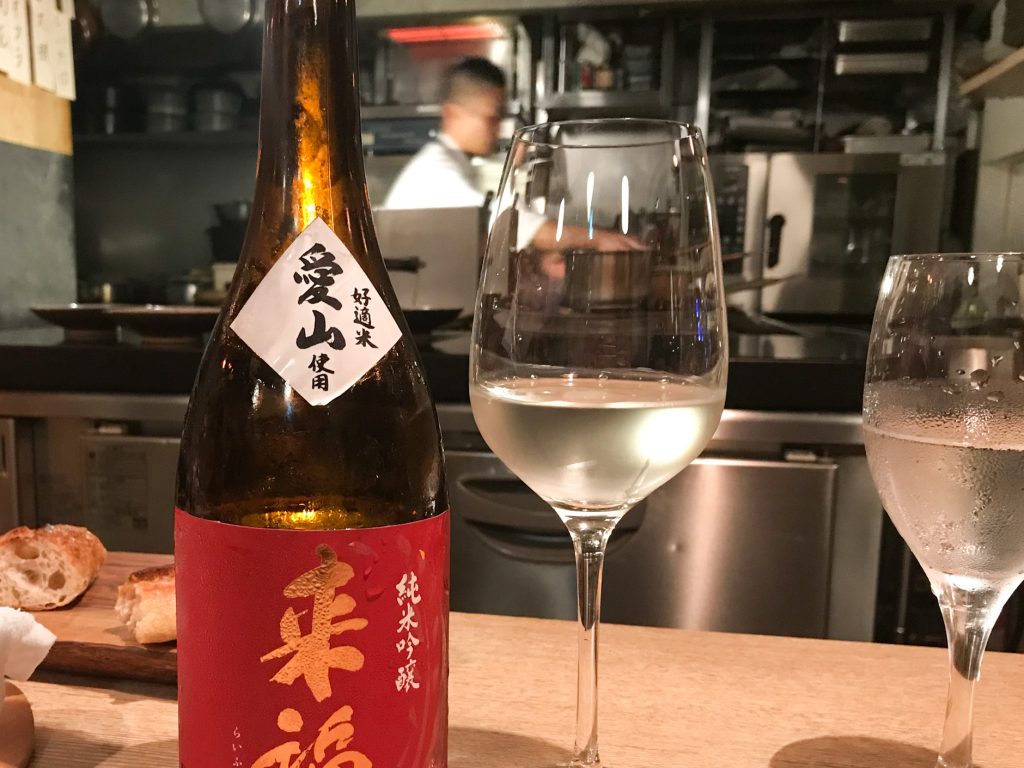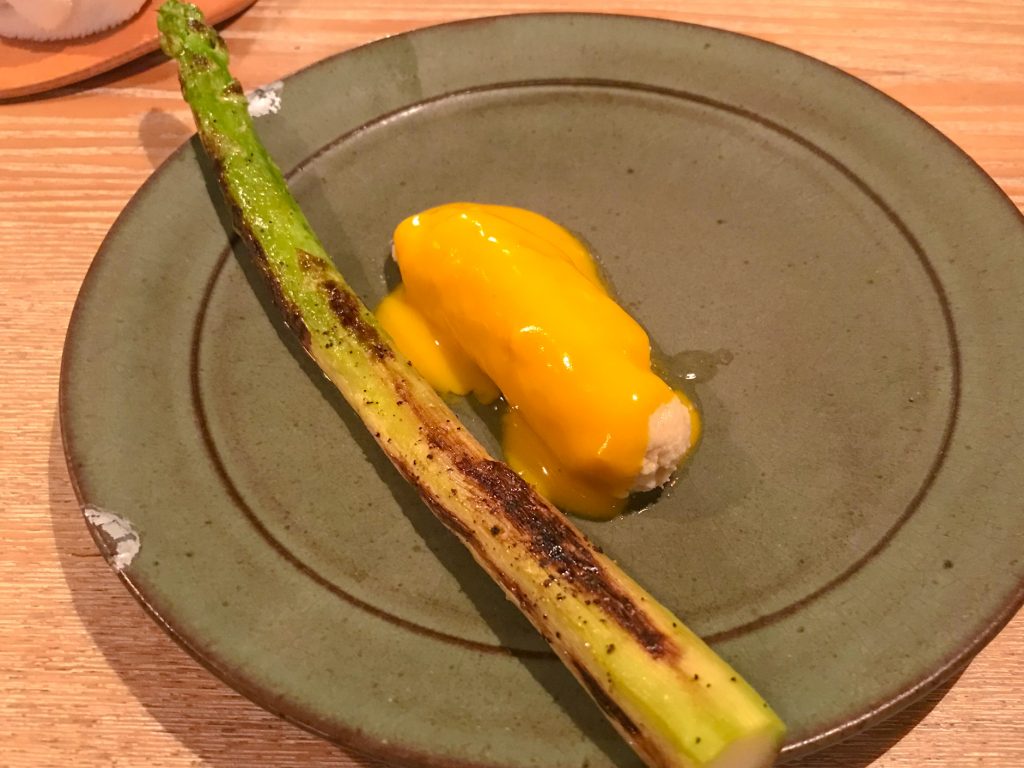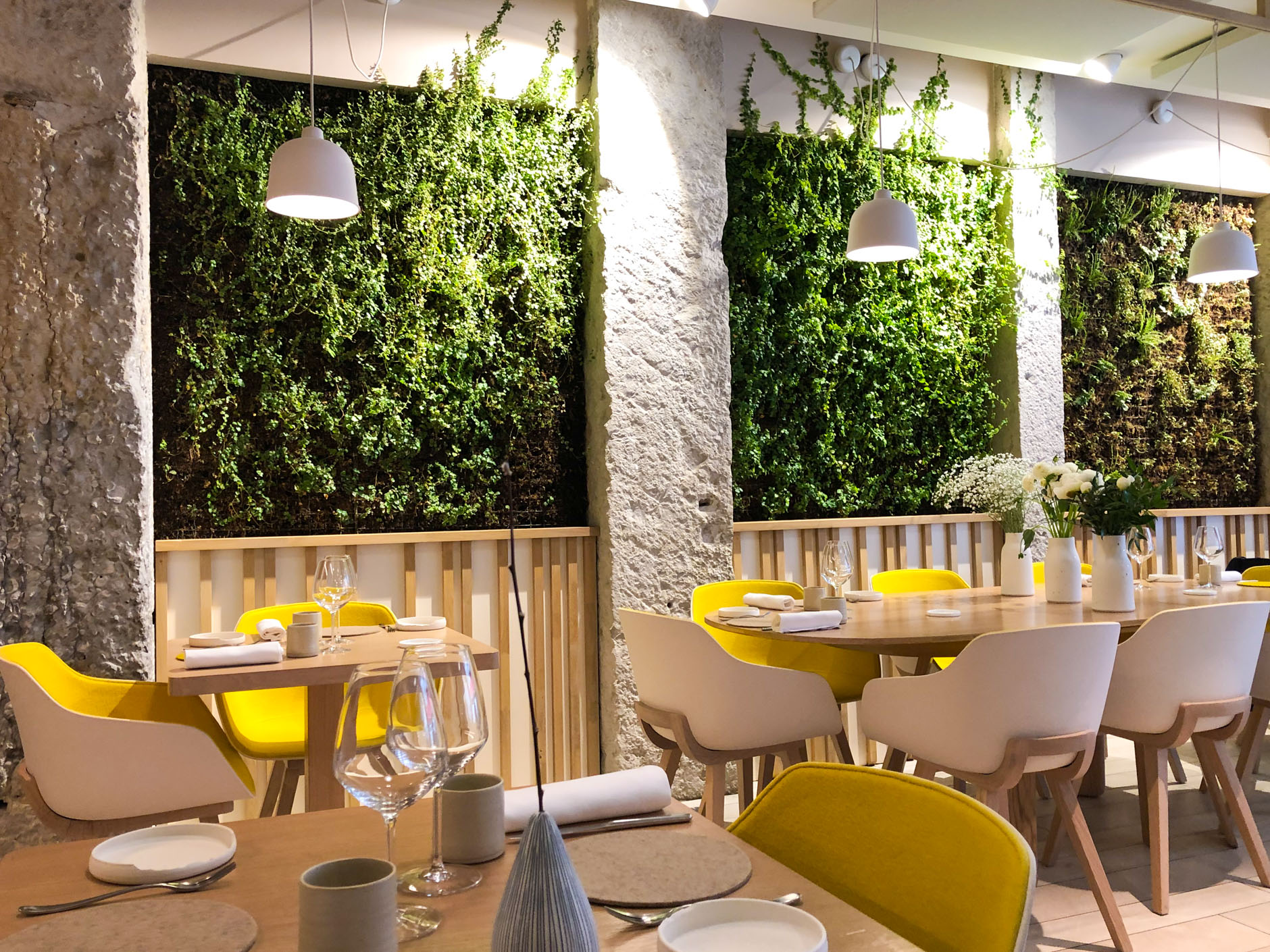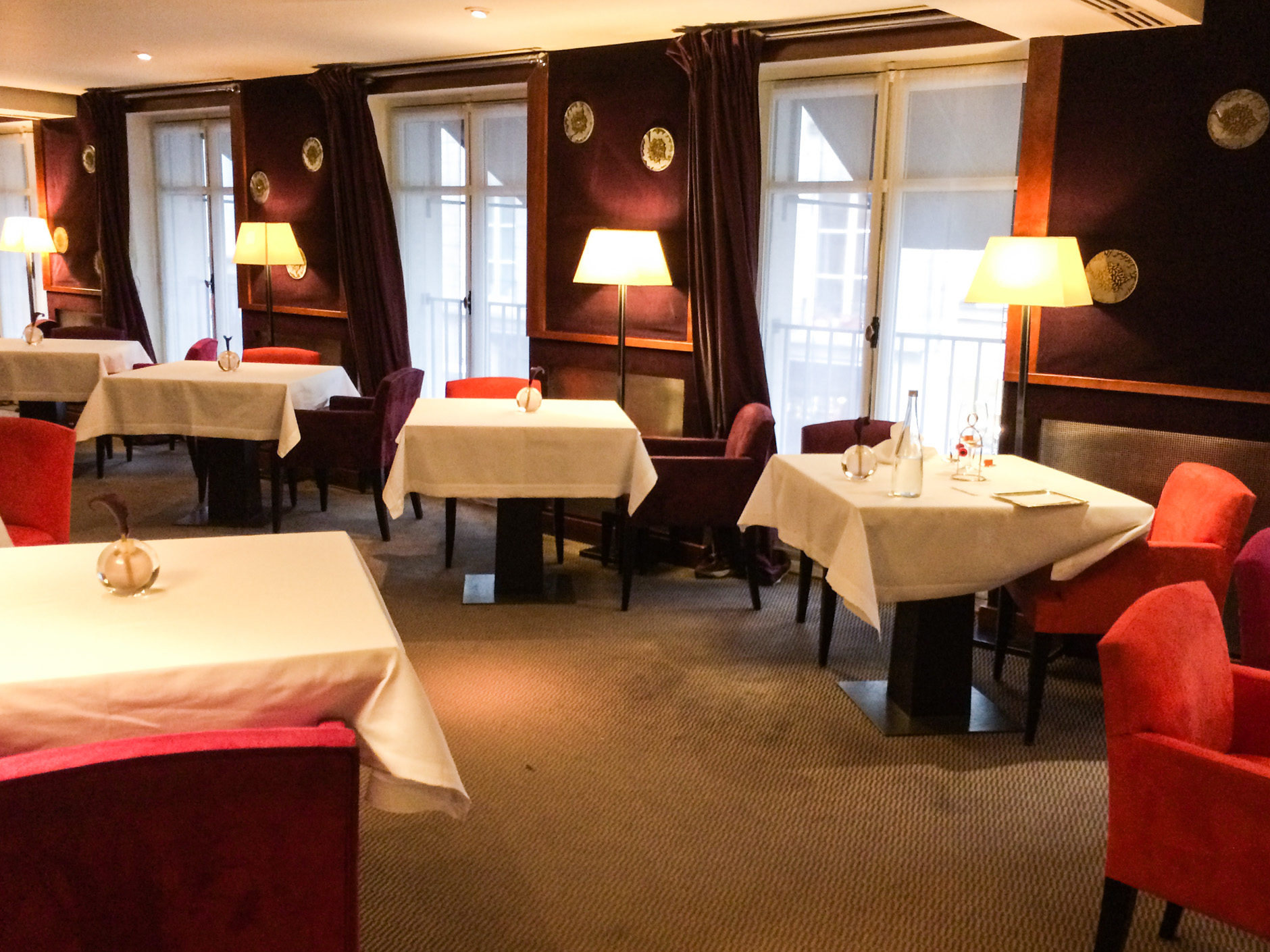The skyscrapers of Shinjuku’s business district loom over the residential neighbourhood of Hatsudai like a scene from Blade Runner. The main shopping street is empty, and as a typhoon disgorges itself on the city, people wait it out in their homes. On a street corner, a brightly lit restaurant remains open, but even so business seems slow. Only one chef occupies the kitchen, and it is the same story front of house. There are only eight covers, in a U-shaped formation around the birchwood kitchen counter.
This is Restaurant Anis, Susumu Shimizu’s tiny kingdom; nothing more than a room with a few tables and the aforementioned counter, surrounding an open kitchen with almost nothing besides an oven and a plancha grill. It’s hard to tell at first that Shimizu trained at Marc Veyrat and L’Arpege, where he headed the meat section. There, he developed a unique method of cooking, by slow-frying large cuts of meat at low heat, sometimes propping up birds on their bones, letting the flesh cook through conduction. Shortly after he left, L’Arpege became a vegetable-focused restaurant, and judging by the quality of the food he served the night I visited Restaurant Anis, this was probably not a coincidence. Every last Saturday of the month Shimizu ditches his conventional, balanced tasting menu for what he calls a “Meating”. In this meal there were no carbohydrates, nor were there any amuse bouches, just six kinds of meat with accompanying vegetables. For this “Meating” he only uses the kitchen counter, so seats are limited. They are fully booked every month.
Anis has managed to turn the concept of a tasting menu on its head – I doubt any other restaurant starts with beef and pigeon
Service began as soon as everyone arrived. First was wagyu tenderloin from Oita prefecture, with a grilled Shiitake mushroom. While the typical wagyu is excessively marbled and almost gelatinous in texture, the chef explained this piece he selected has a lower intramuscular fat content and a flavour much more similar to beef from elsewhere. This was followed by pigeon from Ibaraki prefecture. The sake that came with this dish, also from Ibaraki, was paired perfectly. Even though the sake was delicate and mild in flavour, this had enough fruitiness and depth which worked well with the iron, rich flavour of medium-rare pigeon. My dining companion and I noticed that Anis has managed to turn the concept of a tasting menu on its head – I doubt any other restaurant starts with beef and pigeon – and it still manages to preserve the lightness one usually expects from traditional appetisers or first courses. It was a solid start to a meal that was just about to get a lot more exciting.
That was because the next dish was bear. Specifically, the roasted forearm of a Hokkaido brown bear, something that sounds like it came straight out of World of Warcraft. Grilled bear is a traditional dish in Japan’s northernmost island that has largely fallen out of favour, which is a pity because it is just so damn good. At just the right temperature at which bear fat renders, it becomes a gooey paste which changes the texture of the meat. The 150-day dry aged Aberdeen Angus at Goodman’s Steakhouse has nothing on the funkiness of this dish. Simply unbelievable.
Just after the rich, overwhelming flavours came a pureed chicken sausage seasoned with nutmeg and pumpkin sauce, along with the largest stalk of green asparagus I have ever seen. The chicken was light and sharp, a welcome change from the sticky oils of the previous dish. A veal onglet that followed was the weakest showing of the meal. It was delicious, but a tad too old (and hence too beef-like) for veal. The final dish came: two different cuts of horse from Kumamoto. Horse in Japan is usually eaten raw, as an accompaniment to alcohol. Here, the fillet was slow-fried to medium rare and finished on the grill. The strong but not unconscionable taste of iron in horse might be objectionable to those who live in the UK, but Shimizu trained in France after all, where horse steaks are commonplace.
The vegetables played mere supporting roles to the meats but were still ridiculously impressive, a testament to the effort put into all the ingredient sourcing
I must add that I was very impressed with the vegetables in all the dishes, which I expected to be an afterthought. A part of me wished the chef would make a salad from the ceps, aubergines, purple radishes and okra picked from farms throughout Japan. These vegetables played mere supporting roles to the meats but were still ridiculously impressive, a testament to the effort put into all the ingredient sourcing.
For £100 including a couple glasses of sake, Anis is not a canteen you step in whenever you want. It is also oddly specific and minimalistic; there was no béarnaise on request, no salt and pepper shakers on the table, no butter to go with the baguettes. While the restaurant was well-lit and well appointed, the music playlist of late-noughties pop could have been made by my high school girlfriend for all I know. There was, however, a scoop of black sesame ice cream with salted pea puree to end the meal. Yet for simply cooked, excellently sourced meats, I struggle to think of a restaurant that could better Anis. Carnivores not too inclined to travel halfway around the world could always check out Pitt Cue around the corner from Liverpool Street or Goodman’s Canary Wharf branch, but if you are ever in Tokyo, this is a hidden gem that definitely deserves a visit.
1-9-7 Hatsudai
Shibuya
Tokyo 151-0061
Japan
by J Khou

